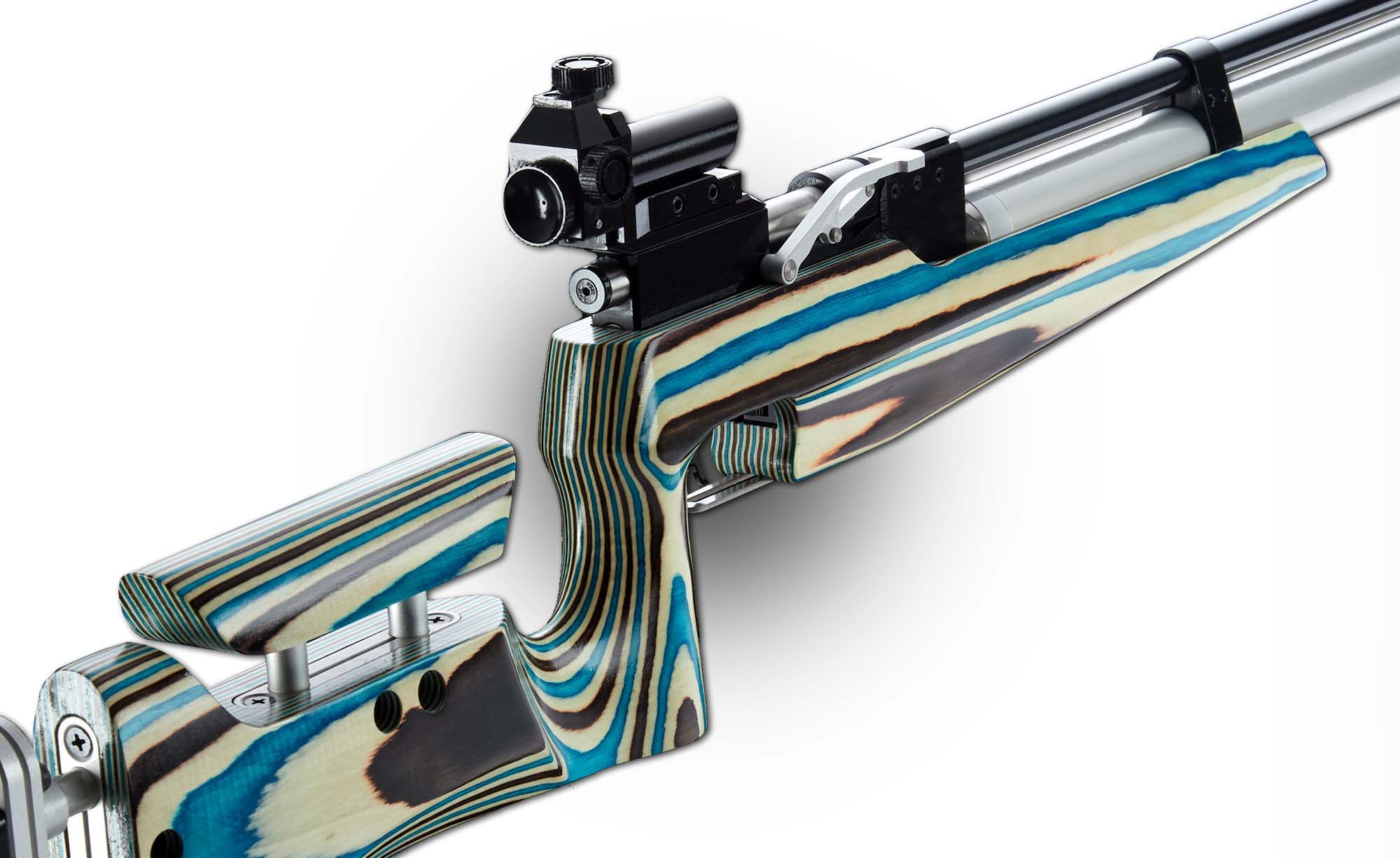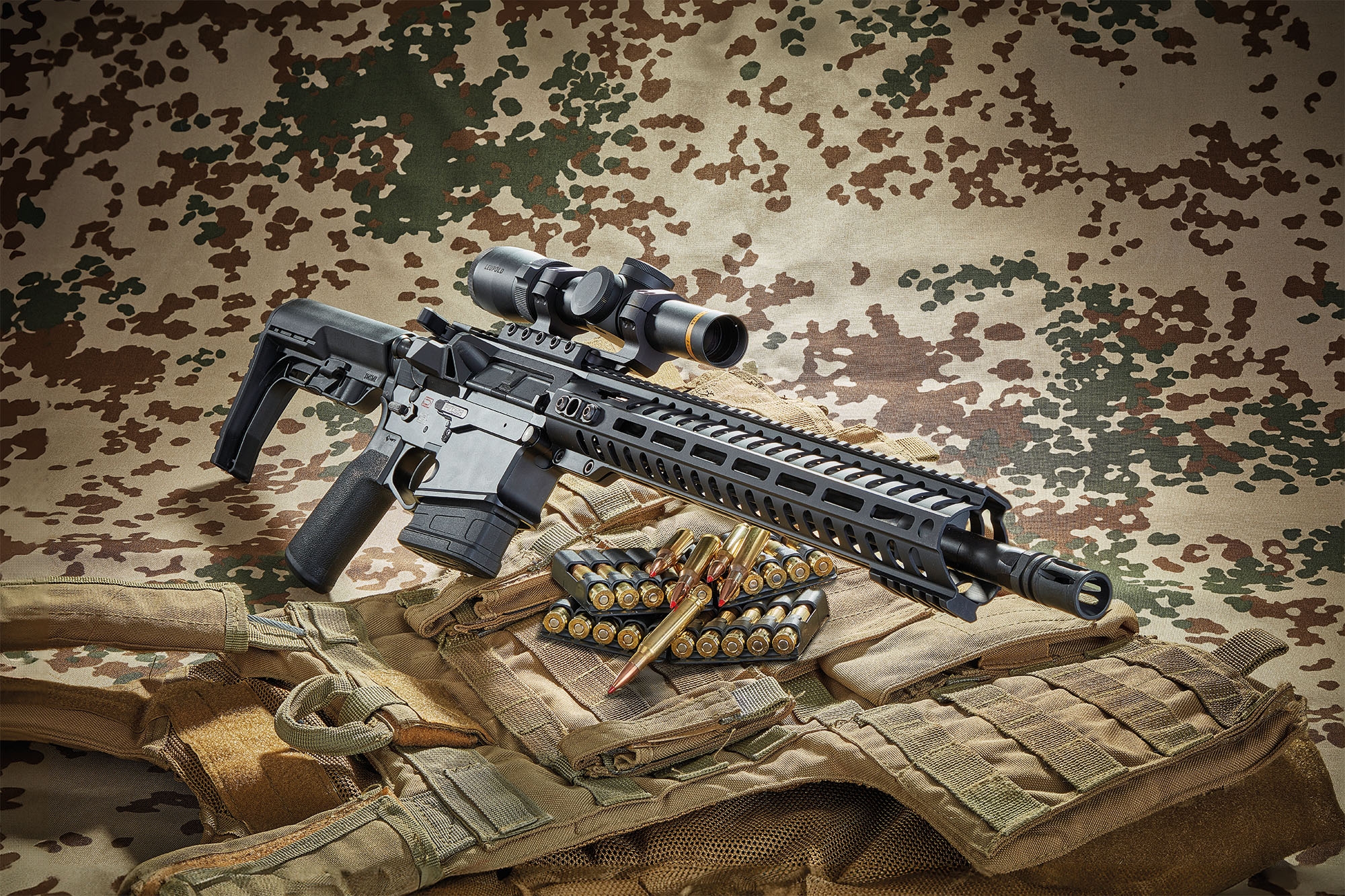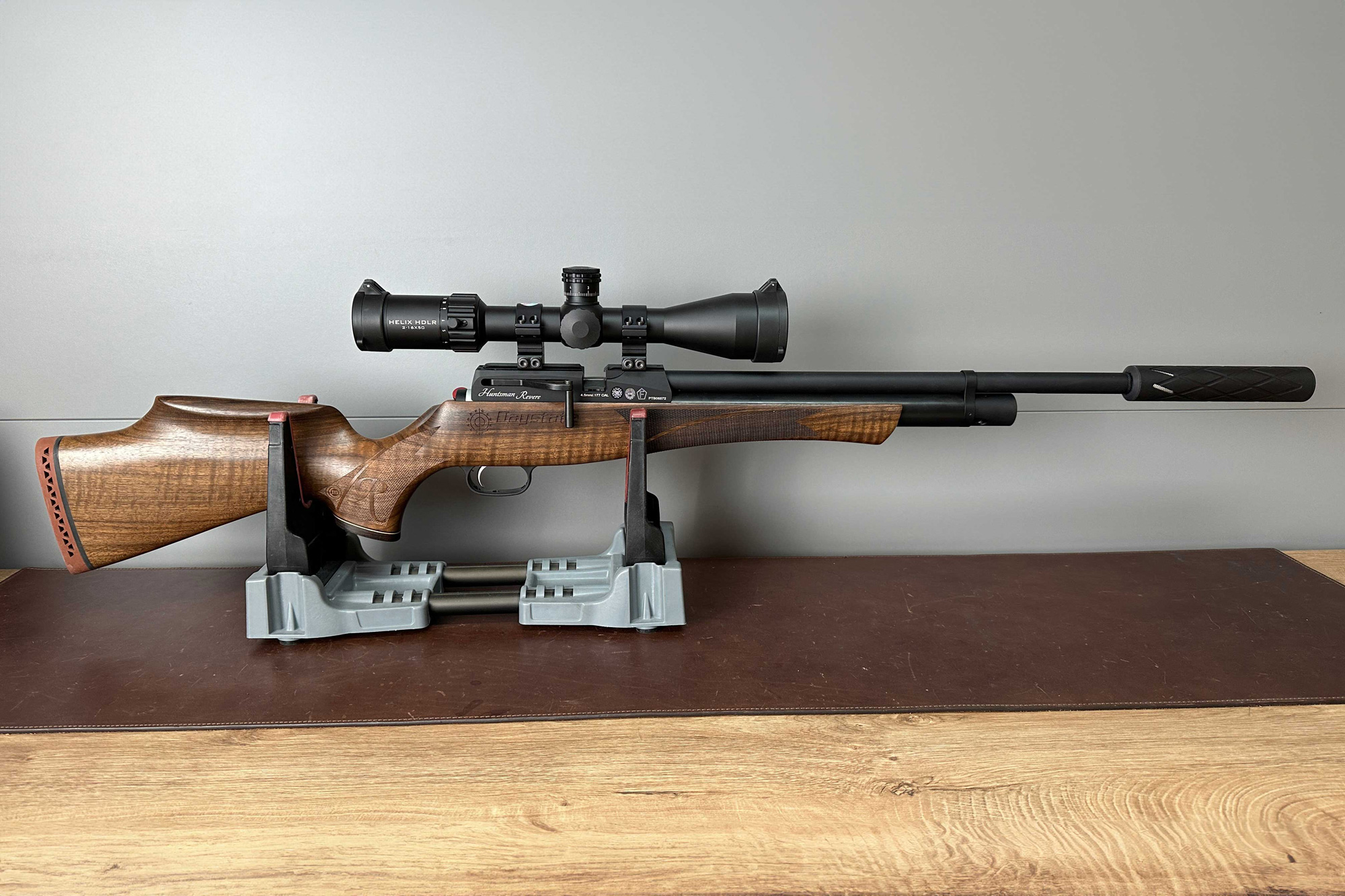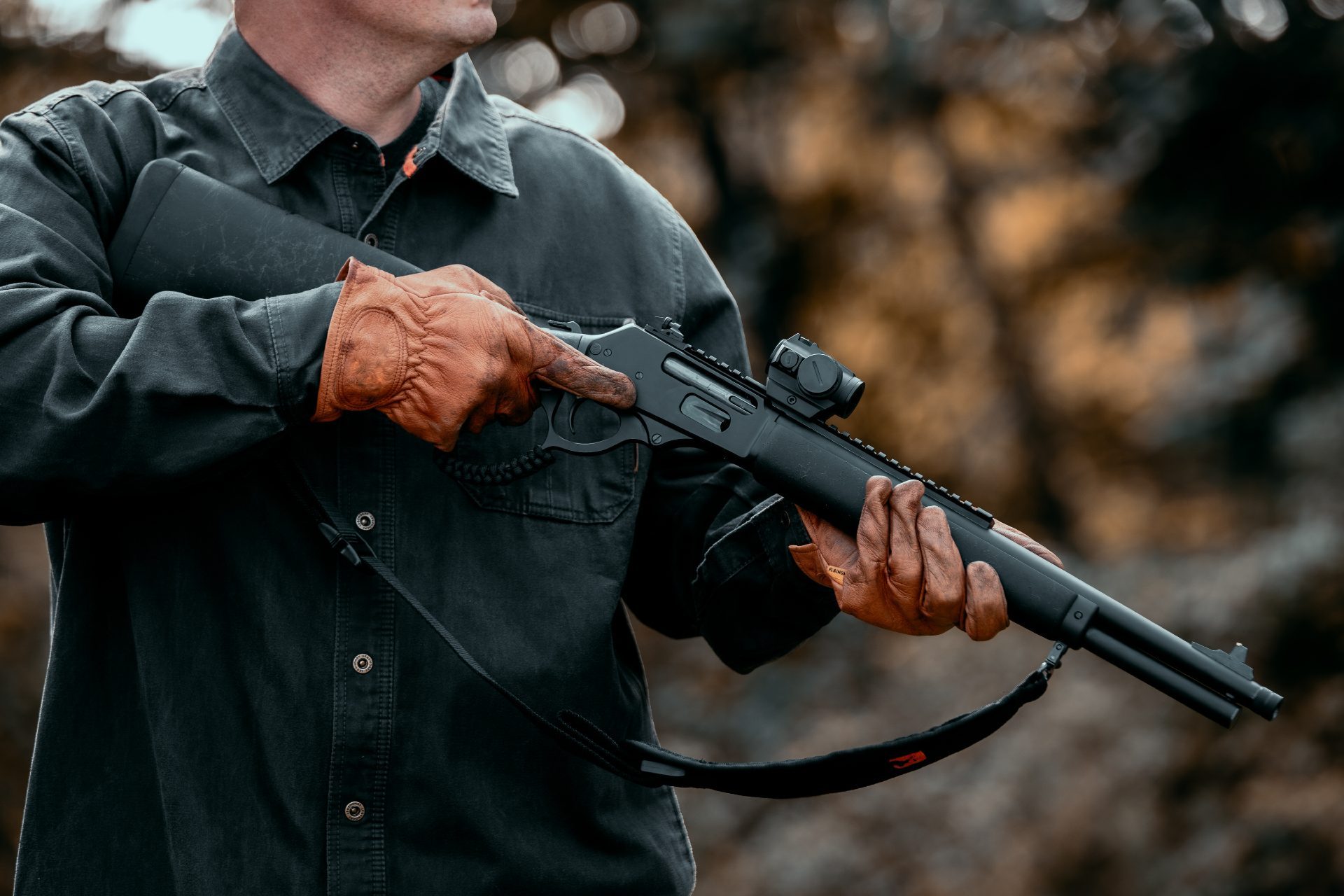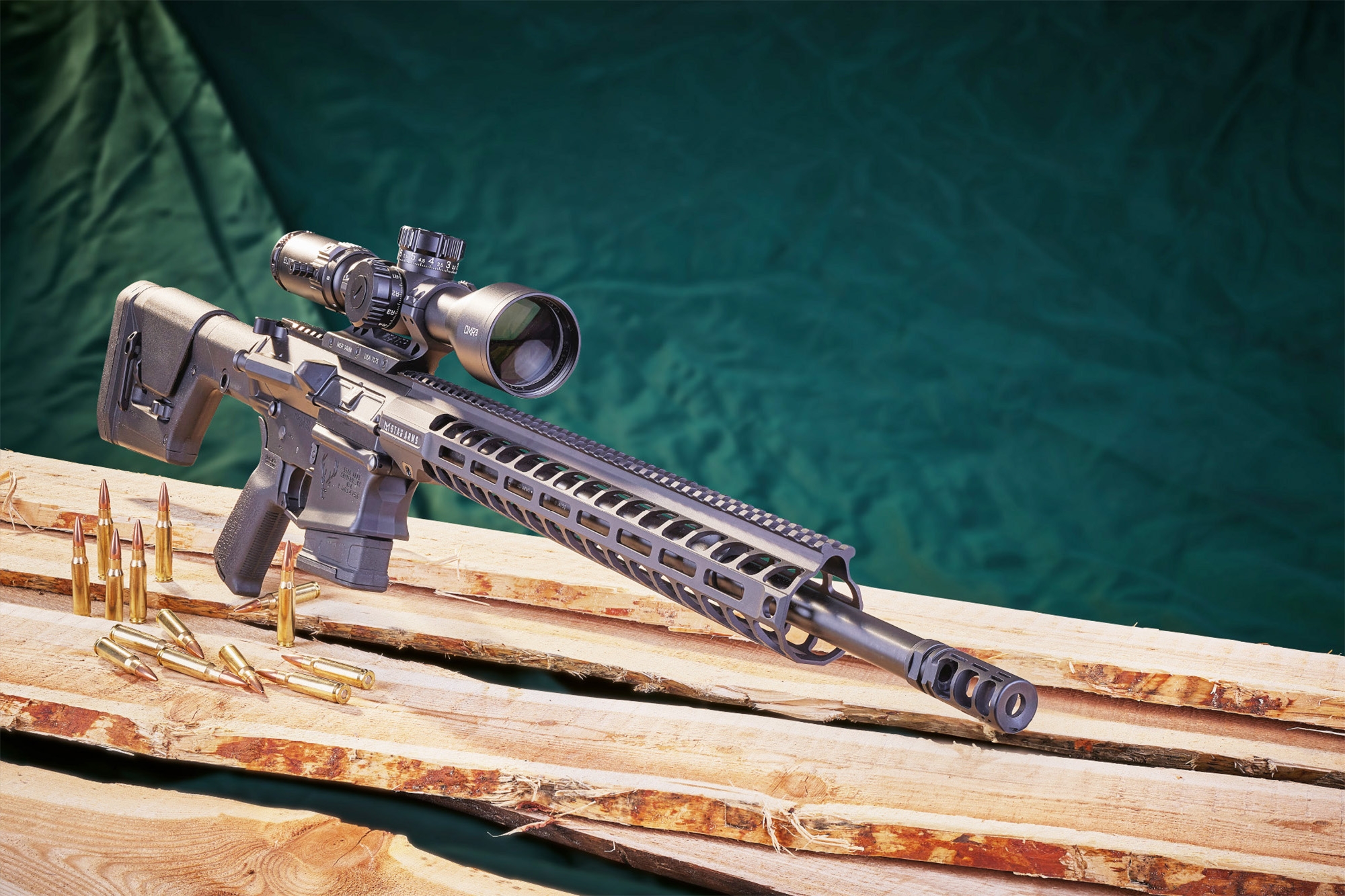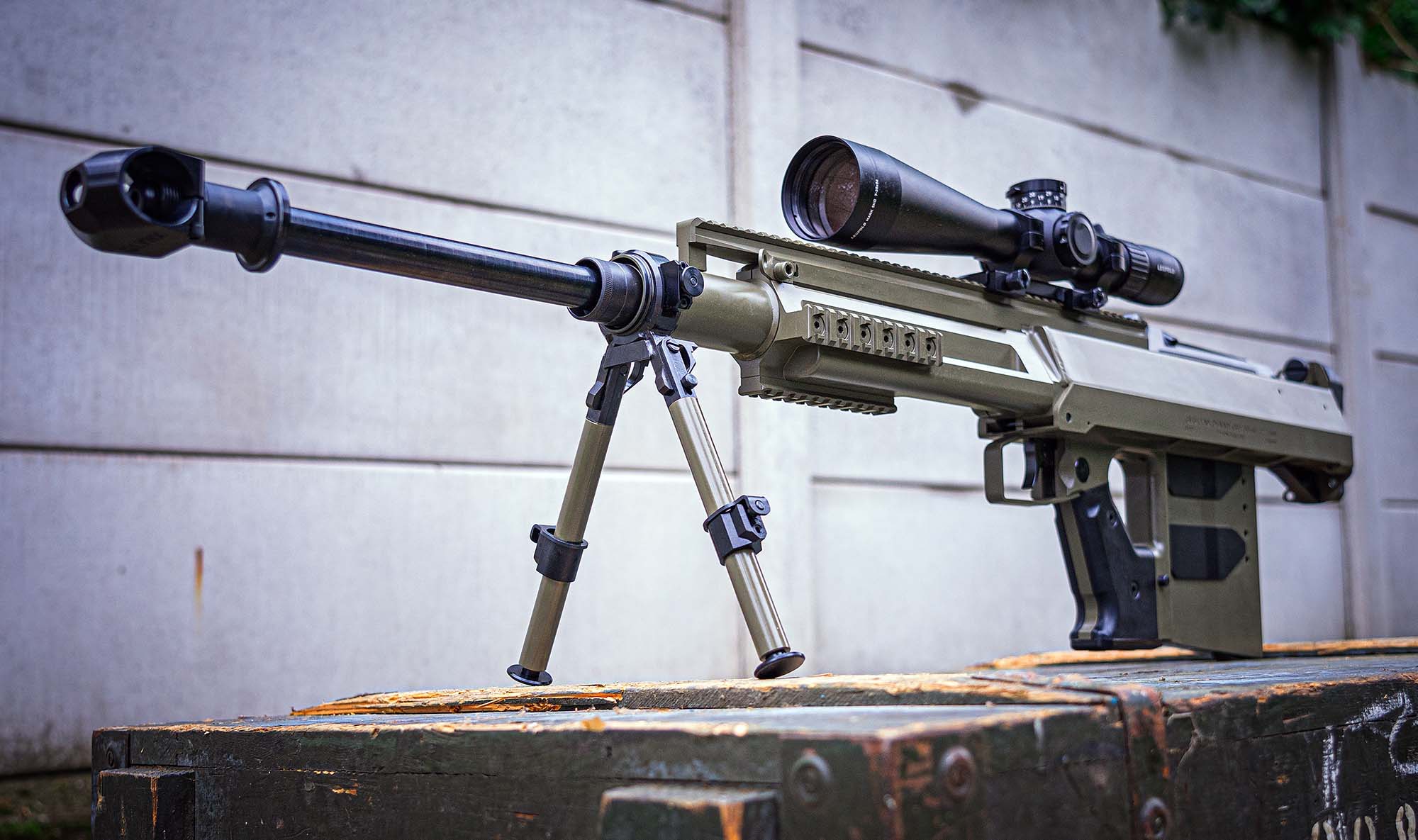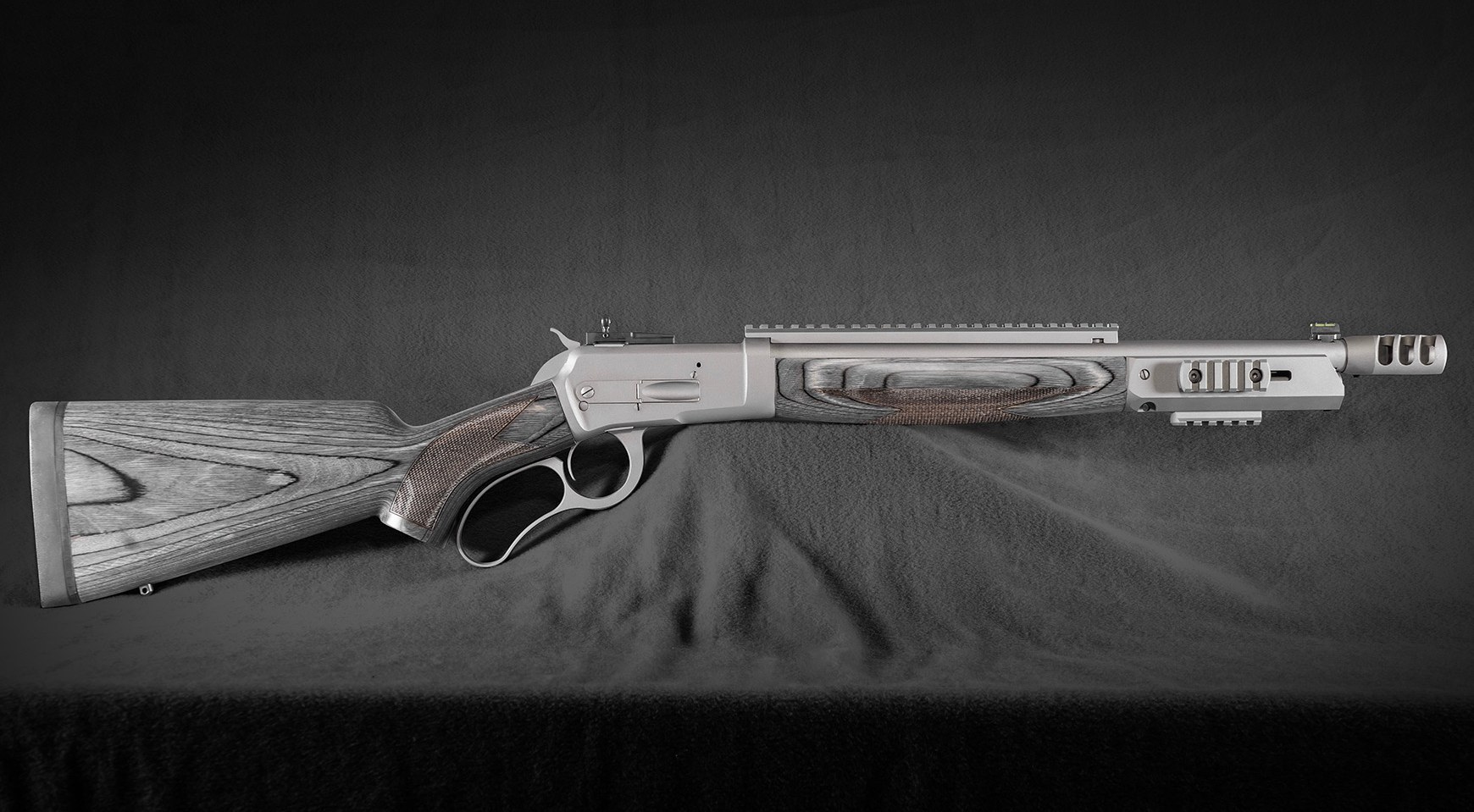Dentler from Leutkirch, in the German Allgäu region, has been known for many years for its cleverly designed riflescope mounts. With the DR21 straight-pull model, the company is now launching its first rifle. We were able to handle it at IWA 2024, but of course we are excited to test this hunting rifle. You can see at first glance that the it is designed completely differently to a conventional bolt action. In order to keep the rifle as short as possible and also to equip it with an intuitive, modern safety concept, the company has come up with a few tricks.
Dentler DR21 concept: what makes the gun different?
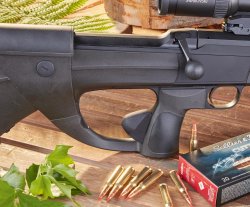
Dentler's first hunting rifle is a straight-pull repeating rifle with a rotating bolt and manual cocking. Two design features give the Dentler DR21 its special flavour: firstly, there is the manual cocking system, where the rifle is cocked and decocked with a simple press of the palm cocking system in the back of the pistol grip. Secondly, even the first glance reveals that this is an extremely short design, although the manufacturer has not skimped on barrel length. From the outside, the DR21 is reminiscent of so-called bullpup designs, which have been seen relatively rarely in the civilian sector for decades, and more frequently in the military sector. Technically, however, this is not true. From a technical and legal point of view, it is not a bullpup rifle because the bolt is not located behind the trigger, but directly above it. A double-stack plastic magazine with a capacity of five cartridges in standard calibers (seven in mini calibers, four to five in magnum calibers) feeds the ammunition. The magazine is concealed in the housing directly above the pistol grip and is pushed onto guide rails from the rear. To insert or remove the ammunition container from the gun, the pistol grip and trigger unit must be swivelled downwards. The crisp direct trigger of the Dentler DR21 is not adjustable. In the test firearm, the trigger broke cleanly with a pull weight of around 850 grams.
Features, calibers, workmanship and prices: Dentler DR21
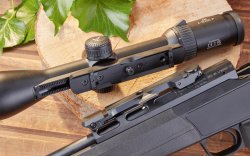
Firstly, a few words about the model range and prices. Dentler offers the DR21 in four versions, with prices starting at 4,999 euros for the basic model with the "Basic" base rail. For around 500 euros extra, you can get the same gun, but with the "Basic Vario" base rail. Both mounting systems have a rotary knob that establishes the connection between the mounting base and a solid pin of the upper mounting section. And the Dentler mounts are robustly constructed so that the use of large optics and additional attachments is no problem.
But what is the difference between "Basic" and "Basic Vario"? In short, the point of impact can be corrected in elevation and windage on the Vario mounting base without having to resort to the reticle adjustment of the riflescope. This is particularly practical (and enormously cost-saving) if, to put it bluntly, you have a gun cabinet full of fine rifles that all want to be taken out on the hunting ground regularly, but you don't necessarily want to or can't afford to buy a dozen premium riflescopes for them. If, on the other hand, you rely on Dentler's basic Vario mounting system for several firearms, then a single high-quality (and expensive) premium riflescope is enough for several guns, possibly supplemented by night vision technology and a suitable adapter.
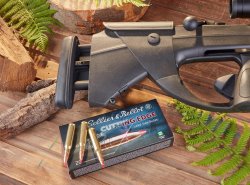
In addition to the two rifle standard models, Dentler also offers two premium models of the DR21 series. Once again with either the scope base rail or Vario base rail, the latter costing 6,629 euros. What are the special features of the premium models? A butt plate that can be adjusted in length in several stages at the touch of a button, into which Dentler also integrates a cushioned butt pad as a delicacy. The buttstock length of the two basic models is fixed, but there are three butt plates to choose from, allowing a length of pull of 365, 355 or 385 mm to be achieved by selecting the appropriate butt plate. The 365 millimeter length is currently the standard stock; a DR21 with the shorter or longer butt plate is considerably more expensive. This is probably due to the fact that the other two butt plates are more or less customised products with correspondingly lower quantities, which also has an impact on the price.
The range of calibers currently available is the same for all four variants and the caliber has no effect on the price: .223 Remington, .30-06 Springfield, 8x57 mm IS, .300 Winchester Magnum and, as in the case of the test sample, the .308 Winchester. In terms of barrel length, only the .300 Magnum is out of line: Dentler specifies a barrel length of 60 cm for Magnum calibers, while all other calibers are supplied with a 52-cm barrel. The instruction manual lists many more calibers and caliber-relevant components. However, it mentions that these calibers are technically feasible in the DR21, not that they are all offered – such things are determined by demand and production capacities.
The fit and surface finish of the DR21 meet the high standards of premium repeating rifles from Germany and Austria, both internally and externally. However, as with the competition, the high quality of workmanship is also reflected in the price. The steel surfaces are protected from scratches and corrosion by nitrocarburising and black oxidation. The aluminum is hard anodised. The polymer stock has a very clean finish and its soft-touch gripping surfaces at neuralgic points also blend unobtrusively and attractively into the overall appearance. Neither a lot of time nor a lot of material is needed to change the caliber. The barrel can be changed quickly using the spanner supplied. And if the bolt head dimensions differ, the bolt head can be separated from the bolt carrier without tools. A suitable magazine may be required when changing the caliber. If the eye does not end up at the correct height behind the eyepiece, depending on the individual use of the target optics, no problem: the height of the DR21's cheekpiece can be adjusted in 2 mm increments. All you have to do is loosen the retaining screw on the side with a coin.
Operation and handling of the Dentler DR21 rifle – Tested with a Swarovski Z8i 2-26x50P scope and Eratac mount
As long as you do not tighten your hand on the pistol grip firmly (and inevitably press in the manual cocking lever), the rifle is completely uncocked and therefore a very safe affair. The straight-pull bolt slides smoothly and without canting, and the DR21 can be fired quickly and comfortably. The fact that the process feels "high-quality" is a bonus on top. How do you open the locked bolt again after cycling if you don't want to pull the trigger? You have to press in the manual cocking lever and then pull back the bolt with the bolt handle at least a few millimeters. If you have long fingers, you can do both at the same time with your right hand. Otherwise, you have to reach over the gun and optics with your left hand and open the bolt with your left hand.
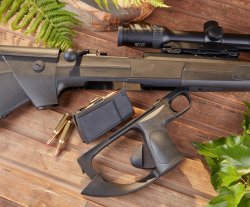
The test rifle came ready to go as a complete package with an on-barrel silencer from Recknagel (Eratac) and a fine Z8i scope from Swarovski, in this case a 2-16x50P. If you point the muzzle of this combo skywards and balance the rifle on the palm of your shooting hand, the not insignificant dead weight of around 5.5 kilos will not be sufficient in the least to depress the palm cocking lever. The solid resistance of the manual cocking system ensures a concept that is as easy to operate as it is extremely safe to use – but you need quite a bit of strength to get a wobble-free grip on the Dentler in the firing position. Apart from the button for swivelling the pistol grip, there are not many additional controls. The premium models have an additional button for unlocking and locking the length-adjustable butt plate. The operation here is a little fiddly, but no tools are required to adjust the stock length and the clever (and very compactly designed) locking system of the butt plate not only allows it to be fixed in five positions: the butt plate is (almost) bombproof in every position, too. There is no perceptible play in the butt plate in any of the positions. The magazine also made a very good impression: light and cleanly finished, but unfortunately not a special offer at a price of 248 euros. A small spring integrated into the guide rail of the magazine holder ensures a tight fit inside the rifle. And for those who don't want to constantly tilt the pistol grip to reach the ammunition container for loading and unloading, the magazine of the DR21 can be loaded very conveniently (and pleasantly quietly) by hand when the bolt is open.
Test on the shooting range: what the DR21 from Dentler can do
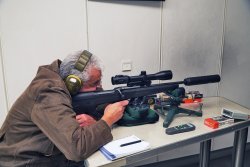
First things first: the test gun performed flawlessly and the shooting accuracy at 100 meters was also more than impressive. The average group with all ammunition types was less than 38 millimetres for five shots, i.e. around 1.25 minutes of angle. The best grouping of the day was achieved with the GECO Express load, with a grouping of just 19 mm (around 2/3 MOA). The test rifle was primarily shot with the "Era@-Silencer SOB2". As a control, the rifle was then tested with the Golden Target (168 gr) from Norma, even without the suppressor (34 [22] mm). This had neither a positive nor a negative effect on the size of the group sizes, but it did have an effect on the position of the hits. At 100 meters, the impacts of the rifle shot with a silencer initially landed off the full ISSF target – which is over 50 cm in size. Significant deviations in hit placement, depending on whether shooting with or without a suppressor, are completely normal.
More interesting than the pure accuracy yield with the clamped rifle, is how the Dentler DR21 shoots, as there are quite a few things that are quite different from conventionally designed rifles, both with a straight-pull action and a bolt action. To determine the hit patterns, the test rifle had to be pull very tightly into your shoulder, because the shooting hand itself was under quite a bit of "tension" due to the palm safety being pressed in. The latter did not work so well, at least subjectively, when the Dentler DR21 was pulled into the shoulder very gently – a lot of force in the shooting hand requires a positive and firm shouldering. However, the action of the straight-pull rifle is as smooth as butter.
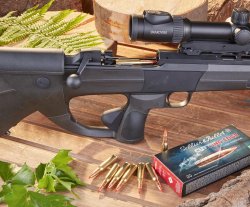
Because the straight-pull bolt runs under the back of the stock, you are also protected from any kind of unintentional contact with your face or glasses – great! However, the fast repeating action requires a short familiarisation phase if you are used to conventional repeaters.
Normally pressed in, the manual cocking device works silently; a mechanical noise only occurs when it is pressed very quickly into the pistol grip. Speaking of pressing in: when pressed in, the resistance in the firing hand is not without its problems. Ten, maybe twenty seconds is fine, but minutes of watching the target with your hand clenched until you are completely sure of your aim when hunting – that would be too hard. But with the usual magnification settings of the riflescope up to around 12x, you can simply press the manual cocking lever in gently just before bending your index finger without the reticle "jumping out of the target" at a distance of 100 meters. This also applies if the Dentler DR21 is only supported by hand on a hard surface at the front of the fore-end, as is not uncommon when shooting at moderate ranges. Subjectively, the test gun in .308 Winchester shot exceptionally softly. And why not, the stock is ergonomically effective, the popular .308 caliber is not a bone-breaker by nature and the DR21 is not necessarily a lightweight either. The Eratac silencer also played its part, as it not only effectively reduces the muzzle blast and muzzle flash, but also recoil. The recoil suppressor integrated into the butt plate of the DR21 makes the kick even milder, as long as the Dentler is not pulled extremely tightly into the shoulder, because in this scenario the recoil pad is already pushed in before the shot breaks.
For whom is the innovative design of the DR21 best suited?
The Dentler DR21 always scores particularly well when you want the best possible ballistic performance in a handy gun, ideally coupled with the best silencer performance. After all, longer barrels exploit the propellant energy better than short barrels and long on-barrel silencers pamper the ears more than short over-barrel designs. The handy and safe-to-operate design makes a lot of sense on narrow ranges or for through-and-through shooters. Of course, the DR21 is also well suited for driven hunts, especially as it distributes its weight excellently thanks to its short design, even with a silencer. This makes it quite comfortable to use. However, if you are one of those driven hunt specialists who rely on the fastest possible shot strings not only in the shooting cinema or on the running boar, but also on the hunt, in which after cycling the hand only "taps" the pistol grip before the next shot – this is not possible with the Dentler DR21: without a firm grip on the pistol grip, it simply won't work.
Dentler DR21 in .308 technical specifications and price
| Model: | Dentler DR21 (basic model with "Basic" rail) – There are 4 models in total. |
| Caliber: | .308 Winchester |
| Capacity: | 5 + 1 rounds |
| Overall Length: | 870 - 920 mm* |
| Barrel Length: | 520 mm |
| Twist Rate: | 1:12” |
| Trigger Pull Weight: | 850 g |
| Weight: | 4,135 g |
| Price (RRP in Germany): | From 4,999 euro (prices of the other variants and calibers can be found at the top of the article) |
| Equipment: | M15x1 muzzle thread, recoil pad*, length-adjustable buttstock*, height-adjustable cheek rest, slide-in magazine. *: Premium special equipment |
Test conclusion: our overall impression of the Dentler DR21

It is short and good. Dentler's straight-pull rifle is also a real technical treat and the shooting performance and workmanship of the DR21 are in line with the very high price. A clear purchase recommendation for all fans of hunting rifles who do not simply want to compromise on barrel length and therefore performance. But for the DR21, the proof of the pudding is in the eating: anyone interested can quickly find out for themselves on the shooting range whether the grip manual cocking system is ergonomic and easy to use or whether it is a bit too much for them in terms of strength.



